Mohammad Ali Keyvanrad
Enhancing Small Object Detection with YOLO: A Novel Framework for Improved Accuracy and Efficiency
Dec 08, 2025Abstract:This paper investigates and develops methods for detecting small objects in large-scale aerial images. Current approaches for detecting small objects in aerial images often involve image cropping and modifications to detector network architectures. Techniques such as sliding window cropping and architectural enhancements, including higher-resolution feature maps and attention mechanisms, are commonly employed. Given the growing importance of aerial imagery in various critical and industrial applications, the need for robust frameworks for small object detection becomes imperative. To address this need, we adopted the base SW-YOLO approach to enhance speed and accuracy in small object detection by refining cropping dimensions and overlap in sliding window usage and subsequently enhanced it through architectural modifications. we propose a novel model by modifying the base model architecture, including advanced feature extraction modules in the neck for feature map enhancement, integrating CBAM in the backbone to preserve spatial and channel information, and introducing a new head to boost small object detection accuracy. Finally, we compared our method with SAHI, one of the most powerful frameworks for processing large-scale images, and CZDet, which is also based on image cropping, achieving significant improvements in accuracy. The proposed model achieves significant accuracy gains on the VisDrone2019 dataset, outperforming baseline YOLOv5L detection by a substantial margin. Specifically, the final proposed model elevates the mAP .5.5 accuracy on the VisDrone2019 dataset from the base accuracy of 35.5 achieved by the YOLOv5L detector to 61.2. Notably, the accuracy of CZDet, which is another classic method applied to this dataset, is 58.36. This research demonstrates a significant improvement, achieving an increase in accuracy from 35.5 to 61.2.
A Novel Compression Framework for YOLOv8: Achiev-ing Real-Time Aerial Object Detection on Edge Devices via Structured Pruning and Channel-Wise Distillation
Sep 16, 2025Abstract:Efficient deployment of deep learning models for aerial object detection on resource-constrained devices requires significant compression without com-promising performance. In this study, we propose a novel three-stage compression pipeline for the YOLOv8 object detection model, integrating sparsity-aware training, structured channel pruning, and Channel-Wise Knowledge Distillation (CWD). First, sparsity-aware training introduces dynamic sparsity during model optimization, effectively balancing parameter reduction and detection accuracy. Second, we apply structured channel pruning by leveraging batch normalization scaling factors to eliminate redundant channels, significantly reducing model size and computational complexity. Finally, to mitigate the accuracy drop caused by pruning, we employ CWD to transfer knowledge from the original model, using an adjustable temperature and loss weighting scheme tailored for small and medium object detection. Extensive experiments on the VisDrone dataset demonstrate the effectiveness of our approach across multiple YOLOv8 variants. For YOLOv8m, our method reduces model parameters from 25.85M to 6.85M (a 73.51% reduction), FLOPs from 49.6G to 13.3G, and MACs from 101G to 34.5G, while reducing AP50 by only 2.7%. The resulting compressed model achieves 47.9 AP50 and boosts inference speed from 26 FPS (YOLOv8m baseline) to 45 FPS, enabling real-time deployment on edge devices. We further apply TensorRT as a lightweight optimization step. While this introduces a minor drop in AP50 (from 47.9 to 47.6), it significantly improves inference speed from 45 to 68 FPS, demonstrating the practicality of our approach for high-throughput, re-source-constrained scenarios.
Feature Based Methods Domain Adaptation for Object Detection: A Review Paper
Dec 23, 2024



Abstract:Domain adaptation, a pivotal branch of transfer learning, aims to enhance the performance of machine learning models when deployed in target domains with distinct data distributions. This is particularly critical for object detection tasks, where domain shifts (caused by factors such as lighting conditions, viewing angles, and environmental variations) can lead to significant performance degradation. This review delves into advanced methodologies for domain adaptation, including adversarial learning, discrepancy-based, multi-domain, teacher-student, ensemble, and VLM techniques, emphasizing their efficacy in reducing domain gaps and enhancing model robustness. Feature-based methods have emerged as powerful tools for addressing these challenges by harmonizing feature representations across domains. These techniques, such as Feature Alignment, Feature Augmentation/Reconstruction, and Feature Transformation, are employed alongside or as integral parts of other domain adaptation strategies to minimize domain gaps and improve model performance. Special attention is given to strategies that minimize the reliance on extensive labeled data and using unlabeled data, particularly in scenarios involving synthetic-to-real domain shifts. Applications in fields such as autonomous driving and medical imaging are explored, showcasing the potential of these methods to ensure reliable object detection in diverse and complex settings. By providing a thorough analysis of state-of-the-art techniques, challenges, and future directions, this work offers a valuable reference for researchers striving to develop resilient and adaptable object detection frameworks, advancing the seamless deployment of artificial intelligence in dynamic environments.
IR-LPR: Large Scale of Iranian License Plate Recognition Dataset
Sep 10, 2022
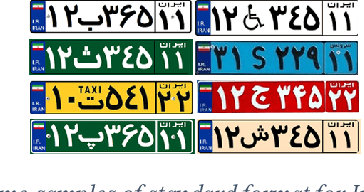
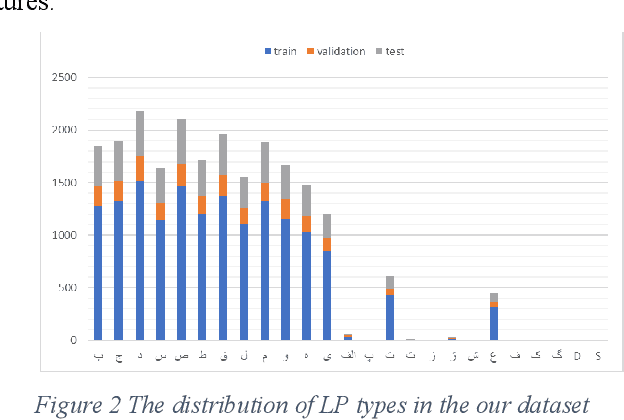
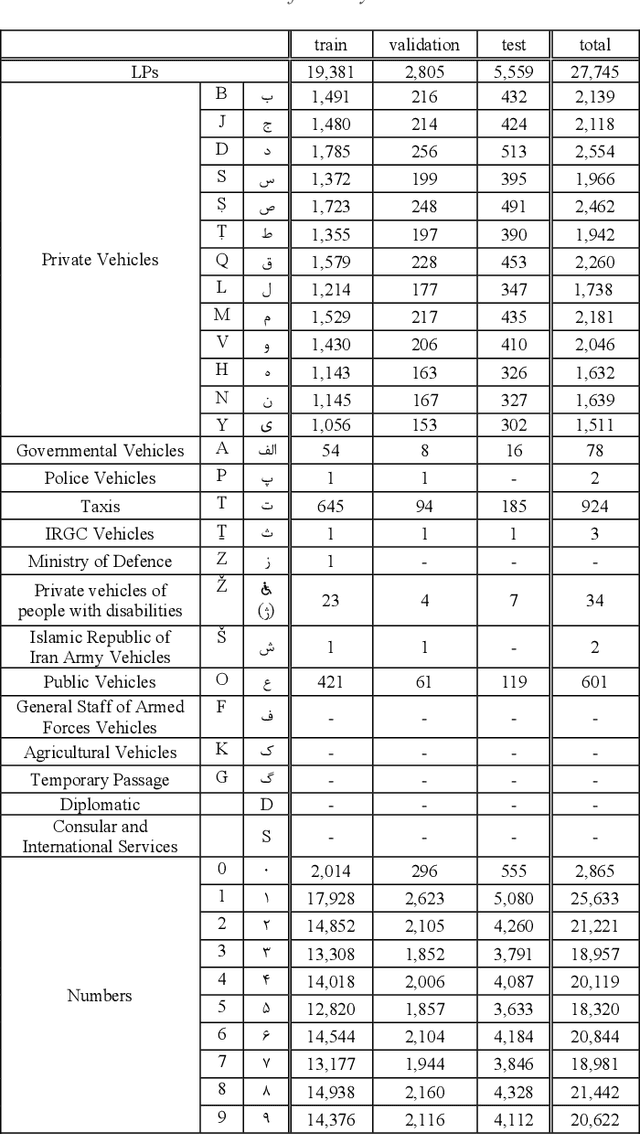
Abstract:Object detection has always been practical. There are so many things in our world that recognizing them can not only increase our automatic knowledge of the surroundings, but can also be lucrative for those interested in starting a new business. One of these attractive objects is the license plate (LP). In addition to the security uses that license plate detection can have, it can also be used to create creative businesses. With the development of object detection methods based on deep learning models, an appropriate and comprehensive dataset becomes doubly important. But due to the frequent commercial use of license plate datasets, there are limited datasets not only in Iran but also in the world. The largest Iranian dataset for detection license plates has 1,466 images. Also, the largest Iranian dataset for recognizing the characters of a license plate has 5,000 images. We have prepared a complete dataset including 20,967 car images along with all the detection annotation of the whole license plate and its characters, which can be useful for various purposes. Also, the total number of license plate images for character recognition application is 27,745 images.
Single Object Tracking: A Survey of Methods, Datasets, and Evaluation Metrics
Jan 31, 2022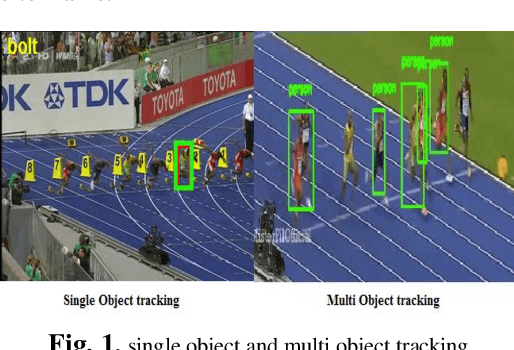
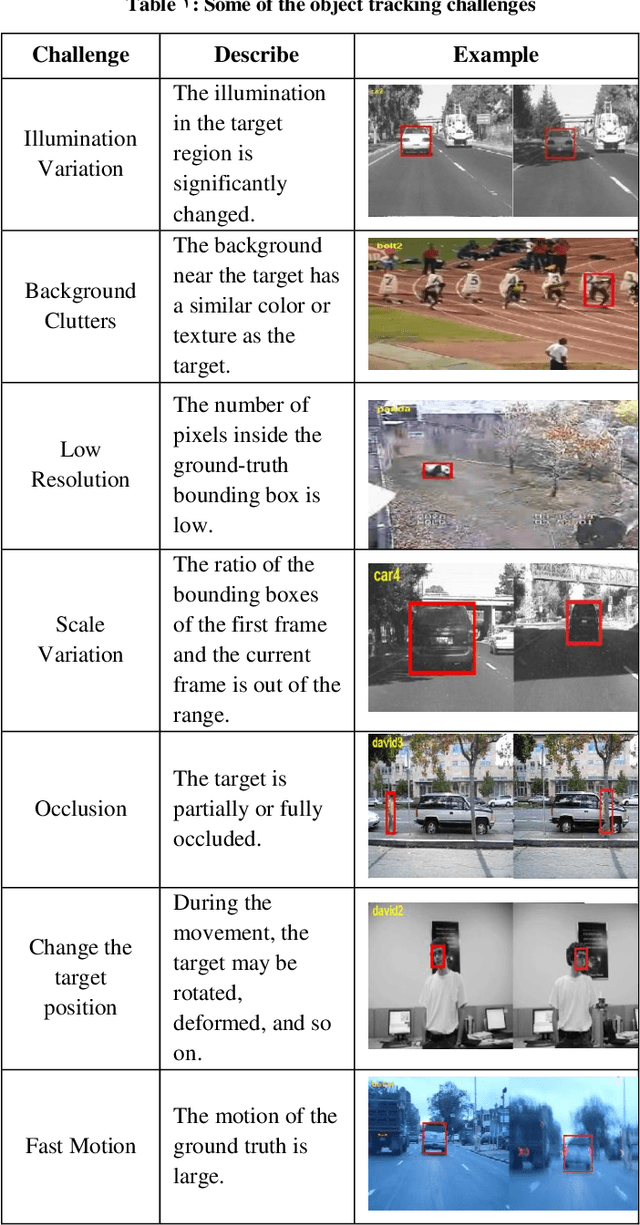
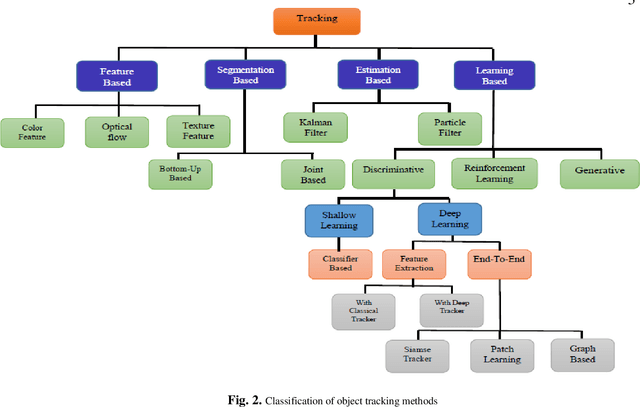
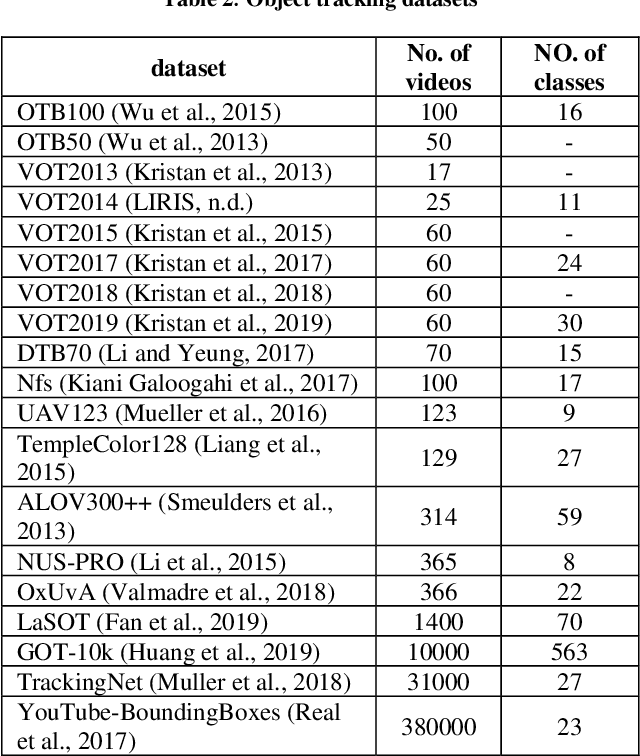
Abstract:Object tracking is one of the foremost assignments in computer vision that has numerous commonsense applications such as traffic monitoring, robotics, autonomous vehicle tracking, and so on. Different researches have been tried later a long time, but since of diverse challenges such as occlusion, illumination variations, fast motion, etc. researches in this area continues. In this paper, different strategies of the following objects are inspected and a comprehensive classification is displayed that classified the following strategies into four fundamental categories of feature-based, segmentation-based, estimation-based, and learning-based methods that each of which has its claim sub-categories. The most center of this paper is on learning-based strategies, which are classified into three categories of generative strategies, discriminative strategies, and reinforcement learning. One of the sub-categories of the discriminative show is deep learning. Since of high-performance, deep learning has as of late been exceptionally much consider. Finally, the different datasets and the evaluation methods that are most commonly used will be introduced.
A brief survey on deep belief networks and introducing a new object oriented toolbox
Jan 06, 2016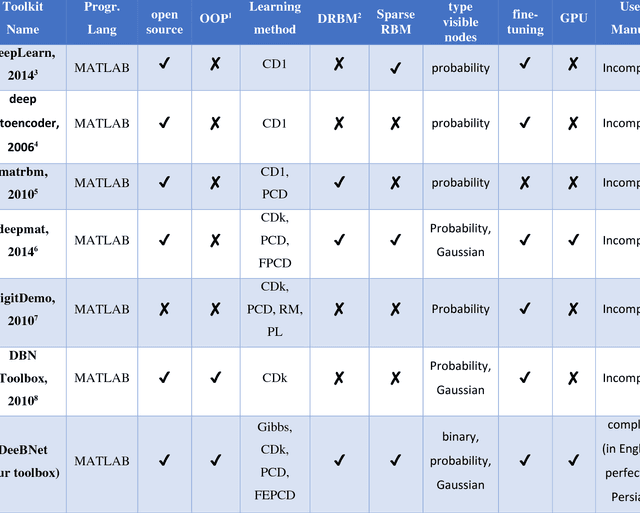
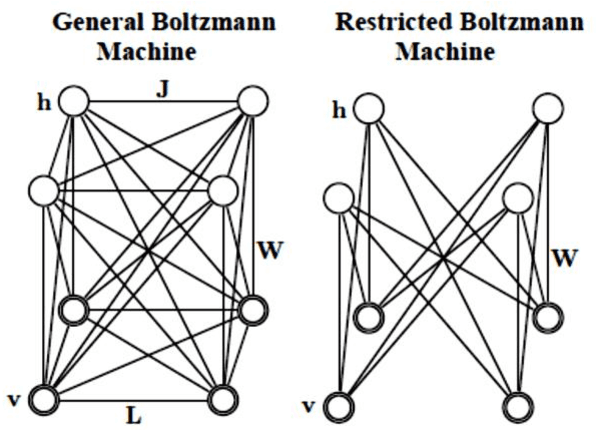


Abstract:Nowadays, this is very popular to use the deep architectures in machine learning. Deep Belief Networks (DBNs) are deep architectures that use stack of Restricted Boltzmann Machines (RBM) to create a powerful generative model using training data. DBNs have many ability like feature extraction and classification that are used in many applications like image processing, speech processing and etc. This paper introduces a new object oriented MATLAB toolbox with most of abilities needed for the implementation of DBNs. In the new version, the toolbox can be used in Octave. According to the results of the experiments conducted on MNIST (image), ISOLET (speech), and 20 Newsgroups (text) datasets, it was shown that the toolbox can learn automatically a good representation of the input from unlabeled data with better discrimination between different classes. Also on all datasets, the obtained classification errors are comparable to those of state of the art classifiers. In addition, the toolbox supports different sampling methods (e.g. Gibbs, CD, PCD and our new FEPCD method), different sparsity methods (quadratic, rate distortion and our new normal method), different RBM types (generative and discriminative), using GPU, etc. The toolbox is a user-friendly open source software and is freely available on the website http://ceit.aut.ac.ir/~keyvanrad/DeeBNet%20Toolbox.html .
Deep Belief Network Training Improvement Using Elite Samples Minimizing Free Energy
Nov 14, 2014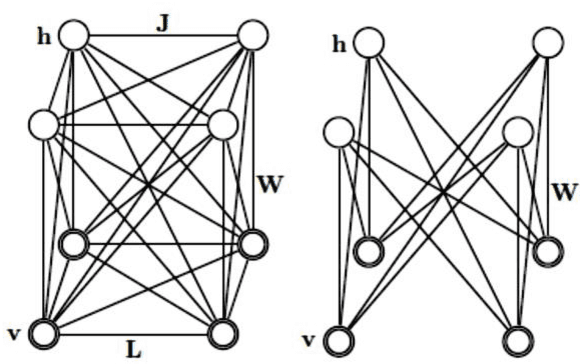
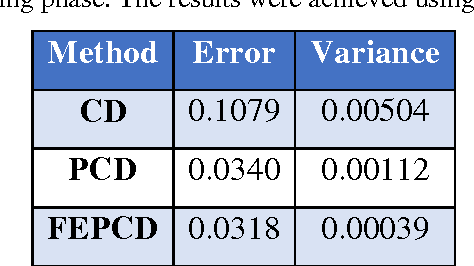
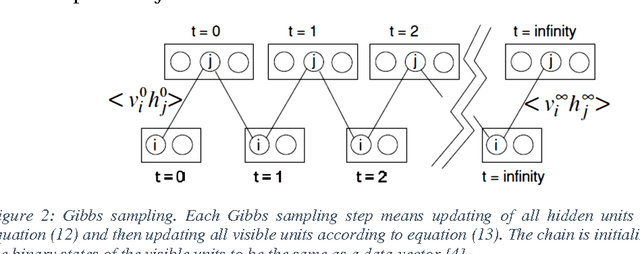
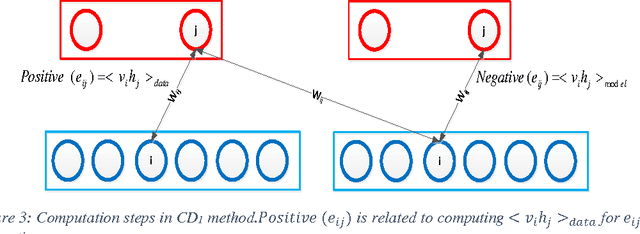
Abstract:Nowadays this is very popular to use deep architectures in machine learning. Deep Belief Networks (DBNs) are deep architectures that use stack of Restricted Boltzmann Machines (RBM) to create a powerful generative model using training data. In this paper we present an improvement in a common method that is usually used in training of RBMs. The new method uses free energy as a criterion to obtain elite samples from generative model. We argue that these samples can more accurately compute gradient of log probability of training data. According to the results, an error rate of 0.99% was achieved on MNIST test set. This result shows that the proposed method outperforms the method presented in the first paper introducing DBN (1.25% error rate) and general classification methods such as SVM (1.4% error rate) and KNN (with 1.6% error rate). In another test using ISOLET dataset, letter classification error dropped to 3.59% compared to 5.59% error rate achieved in those papers using this dataset. The implemented method is available online at "http://ceit.aut.ac.ir/~keyvanrad/DeeBNet Toolbox.html".
* 18 pages. arXiv admin note: substantial text overlap with arXiv:1408.3264
Deep Belief Networks for Image Denoising
Jan 02, 2014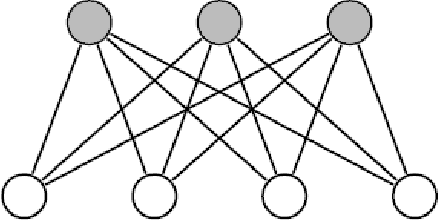

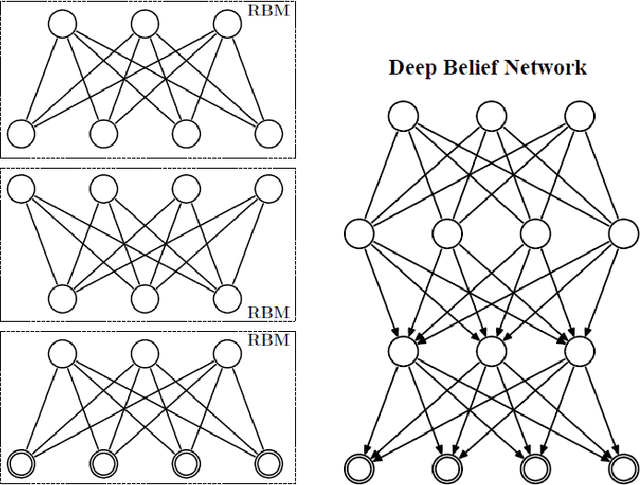
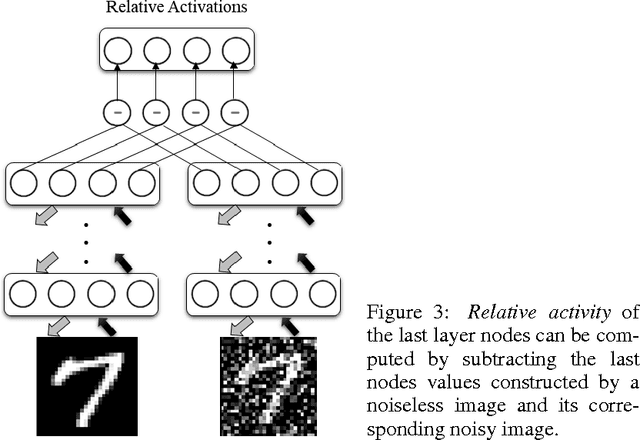
Abstract:Deep Belief Networks which are hierarchical generative models are effective tools for feature representation and extraction. Furthermore, DBNs can be used in numerous aspects of Machine Learning such as image denoising. In this paper, we propose a novel method for image denoising which relies on the DBNs' ability in feature representation. This work is based upon learning of the noise behavior. Generally, features which are extracted using DBNs are presented as the values of the last layer nodes. We train a DBN a way that the network totally distinguishes between nodes presenting noise and nodes presenting image content in the last later of DBN, i.e. the nodes in the last layer of trained DBN are divided into two distinct groups of nodes. After detecting the nodes which are presenting the noise, we are able to make the noise nodes inactive and reconstruct a noiseless image. In section 4 we explore the results of applying this method on the MNIST dataset of handwritten digits which is corrupted with additive white Gaussian noise (AWGN). A reduction of 65.9% in average mean square error (MSE) was achieved when the proposed method was used for the reconstruction of the noisy images.
 Add to Chrome
Add to Chrome Add to Firefox
Add to Firefox Add to Edge
Add to Edge